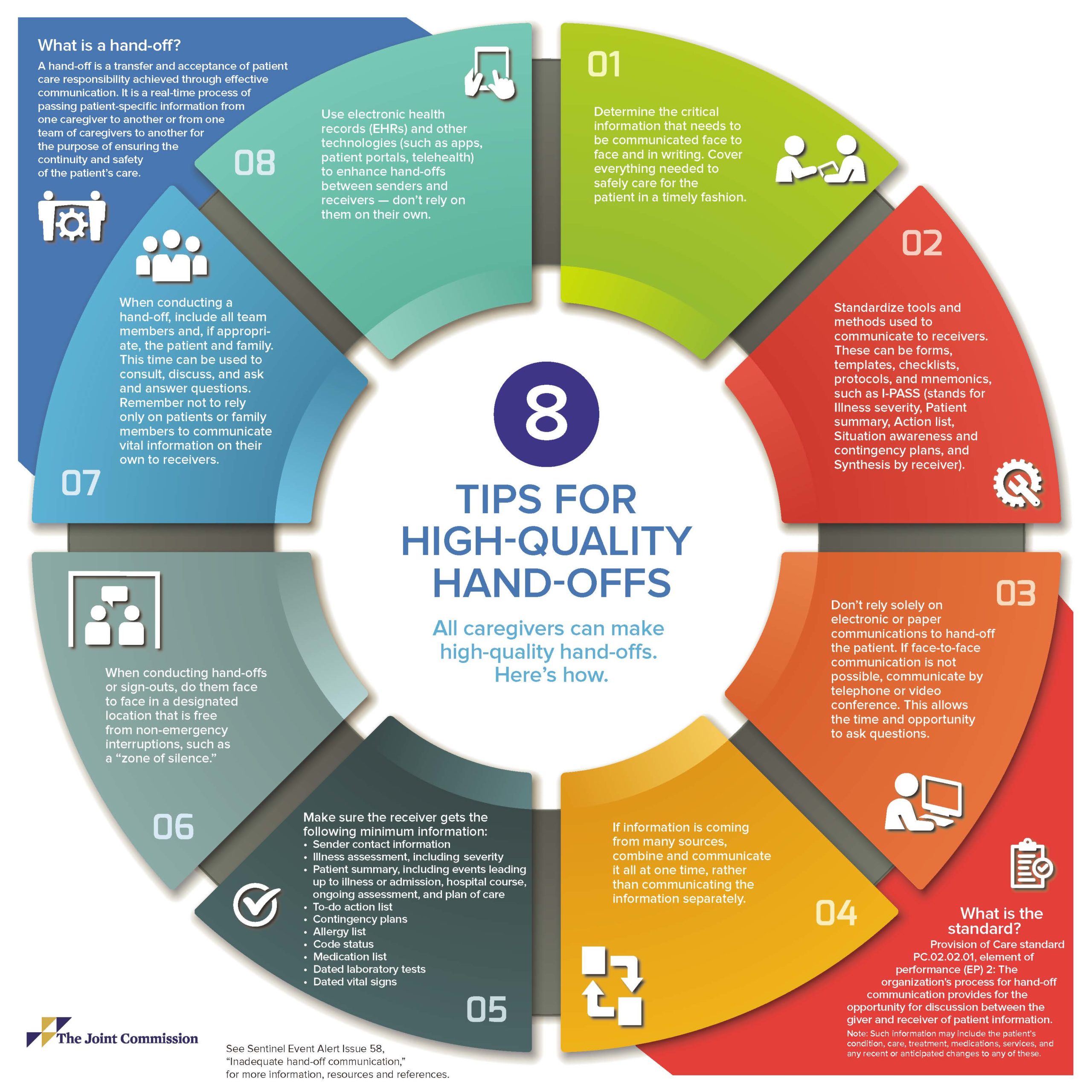
By Kora Behrens, Clinical Nurse Manager, Medical Solutions
According to The Joint Commission (TJC), a sentinel event is defined as any unanticipated event in a healthcare setting that results in death or a serious physical or psychological injury to a patient or patients that is not related to the natural course of a patient’s illness. Healthcare professionals take a lot of pride and are very diligent in their work to avoid any sentinel events. Recently the TJC released a Sentinel Event Alert that identifies specific types of events and high-risk conditions as well as corresponding underlying causes and recommendations to reduce risk and prevent future occurrences of these sentinel events. The purpose of the alert is for health professionals and organizations to consider designing or redesigning processes to prevent or minimize the effects of sentinel events.
The focus of the most recent Sentinel Event Alert released by TJC was inadequate hand-off communication. While it sounds simple to achieve a successful hand-off, in reality, the hand-off communication is much more complex than it seems. In 2010, after hand-off communication was addressed in the National Patient Safety Goals (NPSG), it became a Joint Commission standard that “an organization’s process for hand-off communication provides the opportunity for discussion between the giver and receiver of patient information.” This standard is important because hand-offs are becoming too casual and can be very disjointed and unclear. This creates a large gap in communication which leads to a huge safety risk and concern for patients. It can ultimately contribute and lead to sentinel events in the healthcare setting.
To combat the disconnect in hand-off communication it is important to know the contributing factors to hand-off communication breakdown. These factors include insufficient or misleading information, absence of safety in culture, ineffective communication methods, lack of timing, poor timing, interruptions/distractions, insufficient staffing, and lack of standardizing the hand off process. The Joint Commission offers the following suggestions on implementing successful hand offs:
- Demonstrate leadership’s commitment to successful hand-offs and other aspects of safety culture.
- Standardize the critical content communicated between caregivers using verbal and written hand-offs and standardize tools and methods using forms, templates, checklists, etc.
- Conduct face-to-face hand-off communication in locations that are free from interruptions or distractions.
- Standardize the training on how to conduct a successful hand-off from both the standpoint of the sender and receiver of the communication.
- Use the EHR (Electronic Health Record) and other technologies to enhance hand-offs.
- Monitor the success of interventions to make continuous improvements to hand-off communications.
- Sustain and spread best practices and make high-quality hand-offs a cultural priority for the department and healthcare facility.